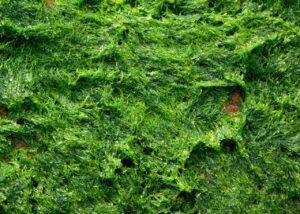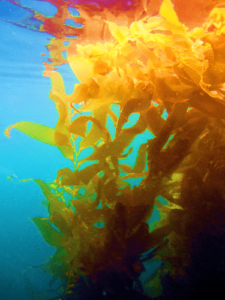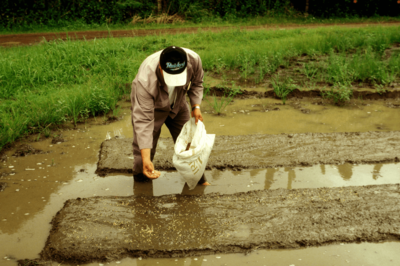Introduction
When people think of algae, they typically picture slimy, green films that grow in still waterways (freshwater and marine). Depending on the species, an Alga may range in size from microscopic to macroscopic and up to a few feet long. Algae are the primary source of atmospheric oxygen that supports many life forms on earth while being blamed for ruining the beauty of transparent waters. The term phycology refers to the study of algae, and phycologists are those who conduct in-depth research on the organisms.

What is Algae?
Algae are cosmopolitan autotrophic eukaryotes having one or more cells that are capable of photosynthetic activity. Organelles like chloroplasts, mitochondria, and the nucleus are membrane-bound in algal cells.
A common mistake students make is memorising Science or a process without understanding the concept behind it. Check out online study options are a great way to clear the science concepts you need. Watch the related video of these Science Concepts.
Examples of Algae
Some well-known algae include euglenoids, diatoms, kelps, Laminaria, Spirogyra, Volvox, Chara, Fucus, Micromonas, Noctaluca, Chilomonas, Gracilaria, and Chlamydomonas.
Characteristics of Algae
Algae can be multicellular or unicellular. They can also be microscopic as diatoms or large and leafy like kelp. They possess certain qualities that are essential for surviving in predetermined living circumstances.
Habitat:
- The majority of algal species are found in freshwater and marine aquatic habitats.
- Different types of water and temperatures allow algae to survive.
- They can also grow on submerged surfaces and damp rocks.
Morphology:
- Unlike plants, algae have a simple form. Unicellular algae can organise themselves into filaments or colonies and are either motile or non-motile.
- Kelp-like multicellular algae contain body features that are intended to serve particular purposes.

Interaction with Environment
Some algae can survive on their own (suspended in water or attached to the substrate), while some species coexist harmoniously with sponges, coral reefs, and fungi.
Mode of nutrition:
- Chlorophyll is a pigment found in the majority of algae, which are photoautotrophs (photosynthetic pigment).
- The facultative and obligate heterotrophic algae are the only real exceptions. They need carbon substrates from their environment to survive. Some people think that algae exhibit mixotrophy (autotrophy and heterotrophy).
Reproduction
- Mitosis and fragmentation are used in vegetative reproduction. In fragmentation, the damaged component regenerates into a whole body.
- Spore formation is the means of asexual reproduction. Mature cells divide and produce spores in their cytoplasm. Upon the emergence of favourable conditions, spores transform into new individuals.
- Sexual reproduction is continued by gametes. Zygotes are created when male and female gametes combine. Female gametes can occasionally grow right into zygotes. This process is called parthenogenesis.
Classification of Algae
Based on their colours, distinct phyla of algae are subdivided.
- Chlorophyta: Chlorophyll a and b, as well as carotenes, are the pigments found in chlorophyta (green algae). They can be found in colonies, multicellular forms, or unicellular forms.
- Rhodophyta: Chlorophylls a and d, as well as phycoerythrin and phycocyanin, are the pigments found in Rhodophyta (red algae). They have a crimson appearance because of the phycoerythrin pigment.
- Phaeophyta: Brown algae, or Phaeophyta, are pigmented with fucoxanthin and chlorophyll a and c. This category primarily includes kelps and seaweeds.
Types of Algae
Depending on where they live, there are several forms of algae.
- Cryophilic algae: Grow in snow and ice.
- Thermophilic algae: Grow in hot climates close to hot springs.
- Epizoic algae: Live on the bodies of aquatic creatures like turtles.
- Edaphic algae: Grow in soil.
- Epilithic algae: Grow on rocks.
- Endolithic algae: Inhabit coral reefs. Some call it a symbiotic relationship.
- Corticolous algae: Grow on moist tree trunks.
Chemical Composition of Algae
They contain a variety of pigments, including fucoxanthin, carotenes, phycocyanins, and chlorophyll. Algae have significantly variable cell wall compositions. Cellulose, alginate, carrageenan, agarose, and glycoproteins, including galactans and mannans, are all parts of an algae’s cell wall. Other biomolecules found in algae include lipids, proteins, carbohydrates, nucleic acids (DNA since eukaryotes), and nucleic acids.
Difference between Normal Plants and Algae
Algae, like many sophisticated multicellular plants, use photosynthesis, which explains why chlorophyll is present. They don’t have genuine stems, leaves, or a clearly defined vascular system, which makes them different from plants.
Importance and Uses of Algae
- They provide between 30 and 50 percent of the oxygen needed for other life forms on Earth.
- Due to their abilities to gel, become colloidal, and create emulsions, red and brown algal extracts such as alginates, agar, and carrageenans are in high demand in the food sector.
- Algae are quite sensitive to the condition of the water (pH and composition). They serve as bioindicators of environmental toxicity.
- From algae that formerly inhabited sea floors, natural gas and crude oil are created. Nowadays, biofuel made from algae is more and more widespread.
Difference between Algae and Fungi
- Fungi are saprophytes. They depend on dead and decaying organic material for nutrients while algae are autotrophs.
- Algae are very different from fungi, which have chitinous cell walls and no chlorophyll. Both, however, exist as lichens and have a symbiotic connection.
- Algae (often green algae) receive protection from fungi, and fungi receive nutrition from algae.
The Life Cycle of Algae
- Haplontic life cycle: The plant is haploid throughout. A diploid zygote is created when gametes (which are created by mitosis) combine. The zygote proceeds through meiosis and produces meiospores, which grow into young algae.
- Diplontic life cycle: The body of the sporophytic plant is diploid. The zygote is created by fusing haploid gametes.
- Diplohaplontic life cycle: In the lifetime, haploid and diploid stages are equally dominant. While diploid sporophytes reproduce asexually, haploid gametophytes proliferate sexually.
- Triphasic life cycle: The life cycle alternates between three generations.
- Gametophyte is the dominant stage in a haplontic system. There are two haploid and one diploid generation in the life cycle.
- Sporophyte, the dominant stage in a diplobiontic organism, There are two diploid and one haploid generation in the life cycle.
Summary
Algae are autotrophic eukaryotes that have one or more cells that are capable of photosynthetic activity. Algae can also be microscopic multicellular (likely leaf-like Giant kelps or unicellular. Chlorophyll is a pigment found in the majority of algae, which are photoautotrophs. Chlorophyll a and b, as well as carotenes, are the pigments found in chlorophyta. Algae are quite sensitive to the condition of the water. They serve as bioindicators of environmental toxicity.
Frequently Asked Questions
1. Are there Roots in Algae?
Ans. Algae don’t have actual roots. Algae have hold-fast organs in place of roots, which serve as anchors and keep immobile algae attached to a solid substrate.
2. Describe Kelp Forests.
Ans. Brown multicellular algae make up kelp. They live in shallow waters close to the beach. Several small invertebrates and fish breed in dense, thick-grown kelp. Carnivores such as seals and sea lions eat kelp by diving into it, forming an ecosystem.
3. Are Humans Harmed by Algae?
Ans. Algae pose no threat. Some algae create toxic substances that are dangerous to people. Fever, diarrhoea, and skin rashes are the results of direct exposure to these poisons.
4. Are Algae Capable of Producing Biofuel?
Ans. Following numerous stages, the energy-dense oil produced from algae is transformed into different types of fuel. Each species has a different process.
5. What Occurs if the huge Kelp is Removed?
Ans. Algae with their many cells can regenerate. If the environment is right, the damaged component can regenerate into a new body. If not consumed by herbivores, it otherwise deteriorates and decomposes.
